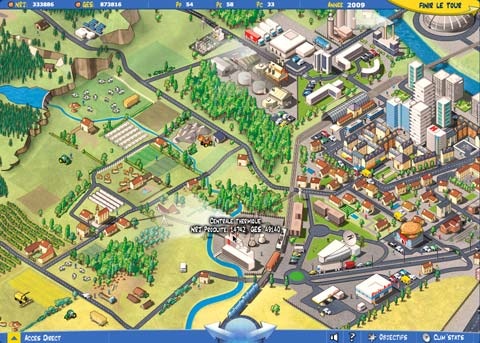 NZ Incorporated has moved from a Kyoto deficit to a surplus, according to the 2009 Net Position Report [PDF] released today. A reduction in agricultural emissions due to the 2007/8 drought, and an upwards revision in forest carbon have produced an expected surplus of 9.6 million tonnes of carbon over the first Kyoto commitment period: 2008-12, worth $241 million at Treasury’s current carbon price of $25.
NZ Incorporated has moved from a Kyoto deficit to a surplus, according to the 2009 Net Position Report [PDF] released today. A reduction in agricultural emissions due to the 2007/8 drought, and an upwards revision in forest carbon have produced an expected surplus of 9.6 million tonnes of carbon over the first Kyoto commitment period: 2008-12, worth $241 million at Treasury’s current carbon price of $25.
Announcing the figures, environment minister Nick Smith commented:
It is good news that we may exceed our Kyoto target but we need to be cautious of these projections given their volatility. It is difficult for the Government to make sound climate change policy when projections have ranged from a 55 million tonne surplus in 2002 to a 64 million tonne deficit in 2006 and when the figures over the past year have varied by 31 million tonnes equivalent to $787 million.
The volatility of the figures certainly doesn’t help the budget process, but has nothing whatsoever to do with making “sound climate change policy”. If you dig around a little in the FAQ [PDF], you find that the government’s only contribution so far has been to increase our liability as Section 2.3 on p2 points out:
Total energy and industrial emissions projections for 2008-2012 have not changed from the 2008 projection. There are reductions in the projected emissions from energy due to lower than projected energy demand during 2008, and the expected effects of a continued recession. However, these have been offset by the effects of removing the Biofuels Sales Obligation and the Renewables (Electricity) Preference, and a small increase in fugitive emissions from greater geothermal electricity generation.
The other fly in the ointment is that although the national carbon account may be positive, that does not necessarily mean that the government will avoid having to buy emissions unit on the international market. A key feature of the current ETS design is the “grandfathering” of heavy emitters by giving them allocations of free units to cover a large chunk of their emissions, and this could lead to the government having to buy units overseas, as Section 5 of the FAQ makes clear:
The net position is a simple balancing of New Zealand’s units assigned under the Kyoto Protocol (Assigned Amount Units (AAUs) and Forestry removal units) against our projected obligation under the protocol. ETS accounting considers how those units will be devolved domestically to participants, and balances up the flows of units from the Crown account. This means that under the net position New Zealand could have a surplus of units, but due to a generous allocation of units under the ETS, the Crown may still need to purchase units from overseas. The ETS accounting is a prediction of what units the Crown will receive from the sectors that have obligations under the ETS, and a prediction of allocation of units to sectors within the scheme. The two sets of accounting are very different as different sectors come into the ETS at different times, and have differing levels of allocation, while under the net position accounting, all of ‘New Zealand Inc.’s’ emissions are accounted for from 2008.
In other words, if the ETS Review proceeds with the expected softening up of the scheme for big emitters and agriculture, even if our national carbon account performs well the government could still end up shelling out taxpayer funds in subsidies to major corporates.
There’s a lot of material to plough through in the report, but here’s an interesting point that should make some of our farming advocates squirm: a chunk of the reduction in agricultural emissions — 4.1 mT, worth $100 million — comes from accounting for the use of nitrification inhibitors and emissions from urine and dung. So much for agriculture not being able to do anything to reduce emissions…
[Update: No Right Turn digs into the methodology changes behind the new figures, DPF at Kiwiblog posts an incredibly facile take on the issue, Business New Zealand want to use the new numbers as an excuse to do nothing (why am I not surprised?), while the Green Party want the government to commit to a 2020 target.]


